Shadow In The Cloud Review TIFF 2020
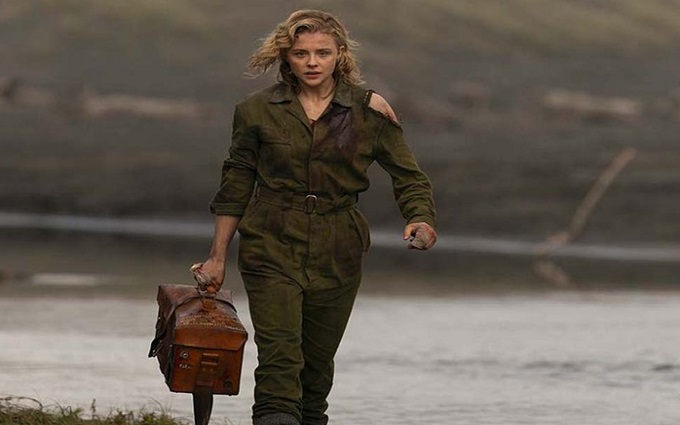
The Plot
On an ominous night in the midst of World War 2 a female soldier hitches a ride on a supposedly routine cargo delivery aboard a flying fortress bomber plane. She’s charged with protecting a deeply mysterious top secret package. Flying through the stormy night and largely confined to a perilously positioned gunner’s turret, she discovers with growing dread that they are not alone in the skies. With enemy fighters and another mysterious ‘passenger’ putting the safety of the crew and her mission in constant mortal danger.
The Good
The film owes a great deal to a rich legacy of fantasy horror. Borrowing most obviously and explicitly form The Twilight Zone and Gremlins. It perfectly executes genre clichés in ways that are equally original and memorable. It’s a perfect combination of the creeping paranoia and lurid sensational thrills of the very best action packed pulp fiction. The film swiftly proves it self to be a worthy new addition to the best genre classics.
Much like the wildly nostalgic and popular Stranger Things, this film oozes a quintessentially 80’s aura of stylish magical mayhem. A brooding and then blistering paced electronic soundtrack injects a modern sense of urgency into an iconic period setting and elevates the film’s dizzying action sequences into even greater heights of excitement. It’s angry, anarchic and cool in the most timeless ways.
The film looks memorably distinctive, thanks to vintage cinematography drenched constantly in shadows and saturated neon colours. It gives a lurid nightmarish quality to a unique setting that is by turns horrifically claustrophobic and stomach churningly exposed to the vast dangers of being 30,000 feet from the safety of solid ground. Those fearing that the film will rely on the low budget horror tactic of keeping action restrained exclusively to an obviously modest sized set will be shocked by just how effectively the film breaks free of those confines.
Chloe Moretz has a proven track record of genuinely shocking audiences with performances which routinely juxtapose her youthful pretty features with graphic visceral action. This performance further enshrines her status as the true successor to genre icons such as Sigourney Weaver. Moretz’s surprisingly stoic and shockingly unstoppable flight officer heroine deals with every form of horrifying aerial adversity imaginable with virtually superhuman awesomeness.
It’s difficult to avoid noticing the countless parallels between Moretz character and Weaver’s career defining role as Ripley in the Aliens saga. She’s a lone voice of seemingly unbreakable feminine wisdom facing up to all sorts of monsters with unflinching bravery and an impressively furious determination to survive.
Moretz commands the screen during its painfully tense moments and carries it joyfully into insane action sequences that would undoubtedly promote shrieks of laughter and wild cheers of approval from any packed cinema audience.
For anyone who utterly adores Stranger Things this film will be yet another delightfully well received flight of fantasy horror. Action packed and effortlessly cool it is a wildly fun embodiment of the true spirit of ‘Midnight Madness’, TIFF’s weird and wonderful iconic late night cinema dreamland.
The Bad
While the film will be a giddy delight for many, admittedly some will find the film’s most outlandish action sequences to be a little too implausibly silly. Having moved with a slow and convincingly menacing pace the film suddenly explodes into frankly cartoonish levels of mayhem that defies the law of physic in perhaps a few too many obvious ways.
For many this uninhibited abandonment of any sense of reality may ask a bit too much of their imaginations and sacrifice the film’s early tension in favour of more generic super-hero fair. Those hoping for the film to lurch into even darker and more claustrophobic directions will perhaps be a little disappointed to see it pull back from horror chills in favour of more cheerful fantasy adventure.
The film nosedives unashamedly into a series of unexpected plot twists and undeniably bonkers set pieces. Those wildly weird manoeuvres may be a little too extreme for some with a more sober sensibility. Those embarking on this quite literal flight of fantasy should be warned that it will certainly catapult them into some very crazy places. You may need to hang on tight to your suspension of disbelief during the film’s most insanely turbulent twists.
The Ugly Truth
Shadow In The Clouds is an instant cult classic, pulsing with a brooding soundtrack, clever visuals and unashamedly joyous performances from a cast fully committed to delivering buckets of schlock B-Movie delights. It further enshrines Chloe Moretz as an unlikely but indisputable action superstar. Overall it’s a gritty and gleeful piece of guilty pleasure genre escapism destined to leave audiences woozy and wonder-struck.
Review by Russell Nelson
I Am Greta Review TIFF 2020
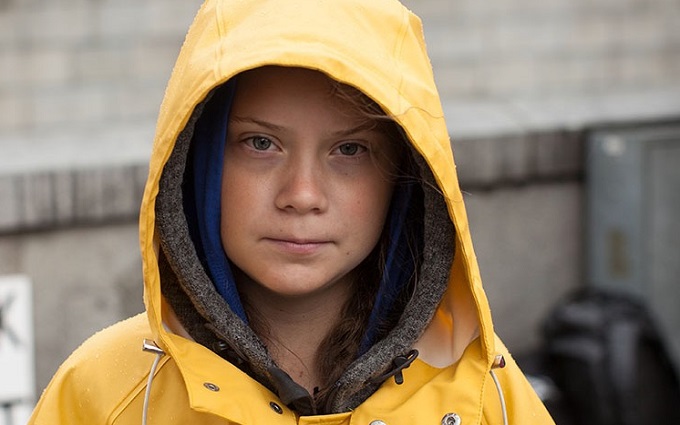
The Plot
The journey of 15 year old Greta Thunberg from sitting alone on the streets outside the Swedish parliament protesting climate change to being a globally recognised and deeply controversial figurehead for Climate activism is captured in an extensive carefully curated documentary. Showcasing her headline grabbing speeches, private exchanges with world leaders and the more mundane realities of travelling the world on her never ending mission.
The Good
Whatever people’s existing opinions about Greta Thunberg, her significance as a surprisingly young global talisman for climate change concerns makes her a fascinating subject matter. Her distinctively diminutive and childlike appearance makes her equal footing inclusion alongside the ranks of world leaders at international conventions all the more bizarre and unexpected. This account of her rapid ascent from a troubled truant schoolgirl to newfound iconic status as the abrasively demanding voice of ‘a generation’ is an interesting insight into the Thunberg phenomenon.
With seemingly unlimited access this documentary presents a complete if clearly well-polished portrait of Greta. Giving audiences a first-hand perspective on her surreal daily existence. It allows audiences to gain at least some impression of what happens in between Greta’s relentless public speaking appearances.
One of the most common accusations made about Thunberg is that she is merely being used as a childish mouthpiece for other people’s words. This documentary proves to be fairly effective in dispelling that suspicion by repeatedly showing seemingly authentic examples of Thunberg writing her own speeches with a literally obsessive attention to detail. While it won’t entirely discredit the argument that she is being manipulated and compelled by adult handlers it at least lends some credibility to the possibility the Greta may be speaking in her own authentic voice.
The film showcases plenty of Thunberg’s most infamous public speeches combined with more private footage of her in candid conversation with her father, political elites and fellow activists. Those that agree with her frequently hysterical pleas for change will welcome this convenient archive of her greatest hits. Likewise those who wish to challenge her supposed wisdom will find plenty of ammunition as well.
This film serves a valuable purpose for anyone looking to uplift or undermine Greta Thunberg. Making it compelling viewing for both polarized sides of the Climate Change debate.
The Bad
Greta Thunberg remains a deeply divisive figure. Despite the fevered global adulation she receives there are still many people that dispute her grim prognosis for the future of mankind, dismiss the utility of the school strike movement she inspires and deeply question the immense international attention and reverence given to an autistic adolescent.
This documentary is candid in admitting that Thunberg had a pre-pubescent nervous breakdown triggered by her exposure to apocalyptic warnings about climate change and the risk of imminent ecological disaster. The combination of these fears and Thunberg’s Asperger syndrome had a devastating almost fatal effect on her. As Thunberg and her father explain it forced her to abandon school for an entire year, starve herself to the brink of serious illness and barely speak for three years.
Though the film seems to hold out Thunberg’s personal struggles as sign of heroism, unfortunately many will still see it merely as emphatic proof that Thunberg is even less well equipped than an average child to emotionally and mentally handle the responsibilities of being catapulted onto the global stage as a de facto world leader on a fiercely divisive political issue.
Critics will also certainly rush to point out that despite the endless rhetoric about changing the world and angry ultimatums to political leaders, the film like Thunberg herself seems to consistently fail to articulate a single concrete achievement.
At times it seems as if the only thing that Greta’s never ending world tour has actually accomplished is creating a near cult like and clearly unwelcome celebrity status for Greta herself. Watching her awkwardly posing for selfies with enthusiastic well-wishers, she is constantly being congratulated for being ‘Greta’ rather than any actual meaningful accomplishment. Her discomfort at the clearly crushing weight of pressure and social attention heaped upon her is at time obvious and a little unsettling.
In particular repeated scene’s where a visibly distressed Thunberg refuses to eat and her permanently strained and exhausted demeanour makes for disturbing viewing. For some people even her seemingly malnourished extreme Vegan diet could be taken as a cause for concern. When she does eat on screen Thunberg seems to subsist on dry homemade pasta flavoured with a little salt. It’s actually a relief to see her reluctantly forced to eat a banana at least once.
The overall impression the film gives is that Thunberg is a lonely and troubled child, welcoming the approving glow of media attention and strangers praise but also worryingly burdened with the exhausting realities of maintaining that status while wrestling with her own overwhelming fears.
The fact that the film never seriously attempts to address the scientific or political debate about Climate Change and instead focuses so exclusively on Thunberg’s personal journey and growing celebrity status, does very little to dispel the sense that the film is merely another piece of well-polished self-promotion.
Instead of using this documentary as a platform to convince sceptics of the validity of Greta’s incessant climate concerns, it merely bombards audiences with repetitive rhetoric about’ time running out’ and a need to do more to fix the problems. The film never offers any actual solutions and in truth doesn’t even properly articulate what the problems specifically are. A total failure to make any scientific arguments at all, leaves all the frequently hysterical calls to action as little more than hollow largely meaningless words.
During one memorable private exchange with President Emanuel Macron, Thunberg is asked directly by the French leader what she most wants world leaders to actually do. Her response as presented is a simple regurgitation of another typical ‘it’s our last chances to save the planet’ soundbite, immediately followed by a casual reminder that first world countries have to do this because the third world has a right to improve their quality of life that excuses them from any responsibility for the environmental impact they disproportionally create.
It will be frustrating for those that strongly disagree with Thunberg’s positions to see her rarely if ever directly confronted with a legitimately critical response. When the film does present a collection of negative soundbites attacking Greta’s positions, it’s used purely as a tool to garner sympathy and the more coherent arguments against her are simply never answered. The film remains mostly a steady parade of politicians and celebrities merely nodding at her in polite approval.
Thunberg herself openly questions during this documentary why she keeps being invited to give angry sometimes teary eyed speeches when it seems nobody is really listening and they’re all just playing along for the cameras. She suspects they’re only indulging her for the sake of good photo op. Sadly for once her assessment of the situation may be painfully accurate.
The Ugly Truth
This documentary will naturally by received by those who consider Thunberg to be an inspirational young hero as a proud celebration of her rise to international prominence and pop culture superstardom. In sharp contrast others will see it as a shocking confirmation that Thunberg is at best a misguided and especially vulnerable child being unfortunately exploited to spew mostly meaningless rhetoric in service of an extreme political agenda fuelled by needless fearmongering. In truth the film remains compelling and useful viewing whichever side you belong to.
Review by Russell Nelson
Good Joe Bell Review TIFF 2020
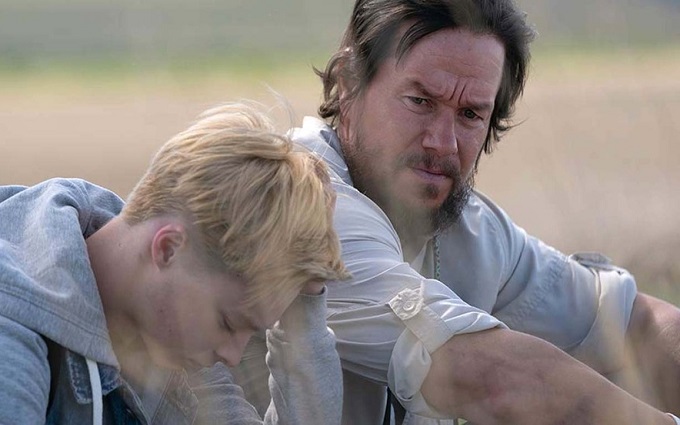
The plot
Joe Bell is a man on a mission. Marching across America speaking to anyone who will listen about the danger of bullying and the devastating effect it had on the life of his teenage son Jayden. Jayden grappled with the harsh realities of being openly gay in a rural American town. A situation as confusing and difficult for his father, leading to him search the open road for answers and perhaps a redemption of his own.
The Good
Mark Wahlberg is well cast as the rugged American archetype struggling to reconcile his undoubted love for his son with the deep discomfort of confronting the public abuse he suffers. It’s a raw performance that strenuously flexes his dramatic talents. Wahlberg’s performance gradually reveals layers of a man struggling to find meaning and purpose in tragedy, literally walking in search of this healing and to escape painful realities.
The film doesn’t shy away from showing Joe Bell’s imperfect nature. Though he clearly intends to be a good father his temper and undue concern for the opinions of others frustrates his efforts to be the supportive and loving parent he intends to be. It’s important for the film to show the character confronting his own culpability and shortcomings as he marches across America trying to teach those that will listen the importance of avoiding toxic intolerance. It lends greater weight to the films message.
Alongside Wahlberg, Reid Miller is a young actor who does exemplary work in making Jadin Bell by turns infectiously endearing and tragically afflicted by abuse. Witnessing the pairs’ real and imagined exchanges depicts a powerful example of love as it was and as we wish it could be. It’s especially poignant as a specific portrait of the challenges that face gay children and their families trying to process the world’s often hostile reaction to ‘difference’.
The film explores the complete interwoven narrative of one family’s journey, from the torment that Jadin suffers through its awful consequences and the cathartic aftermath. Moving back and forth smoothly between different points in this journey is perhaps more effective than a simply linear retelling would have been. It allows the film to be more reflective throughout.
The Bad
Life is often deeply cruel and disappointing, its stories rarely have neat endings or obvious meanings. This film sadly has to work within the constraints of real events which are repeatedly tragic and seemingly senseless. It’s painful viewing and sadly incapable of fully giving audiences the answers and catharsis they may crave. The film has noble intentions but it’s more than any one piece of cinema can possibly achieve to rid the world of intolerance or explain why love is not always perfect or enough to save us.
The film explicitly speaks to the fact that those willing to listen to messages of tolerance and compassion aren’t the problem. So it’s hard perhaps for a film like this to reach the audiences who would most benefit from its message.
While the film speaks to an important issue perhaps the immeasurably complex and deeply personal nature of such topics makes it simply impossible for just one account to adequately sum up that type of lived experience. For this reason the film will undoubtedly resonate more with some people than others.
The Ugly Truth
Good Joe Bell is a sincere exploration of the devastating impact of bullying and the struggle to find acceptance and to accept those we love as they are. Though like life it is an imperfect journey and scared by tragedy it speaks to audiences with a heartfelt weight of loss and the important lessons it should teach us.
Review by Russell Nelson
Concrete Cowboy Review TIFF 2020
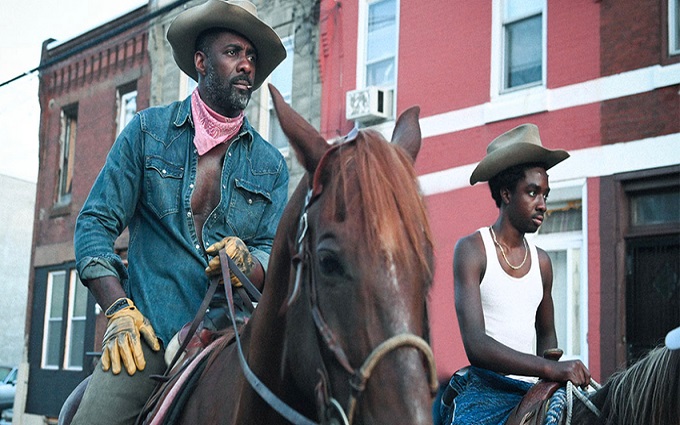
The Plot
A troubled teen is sent away to live with his estranged father in Philadelphia and is plunged into a surreal world of inner city cowboys. A black community living with horses in their homes and as the last proud survivors of a forgotten portion of the rich western legacy.
The Good
Concrete Cowboy is a unique experience of two deeply unexpected world’s colliding in a surreal urban dreamscape. The juxtaposition of modern settings with literal cowboy culture captures a visceral spirit of the West. While the sight of horses and low dipped Stetson hats alongside a bleakly concrete urban wasteland is jarring initially, it’s soon obvious that there’s a strange connection between them.
The parallels between the fiercely dangerous and barren city streets and the once untamed western wilderness are powerful and richly realised in the conversations of the new inhabitants. There’s a stoic determined independence to this community as they battle against poverty and hardships that speaks to what it really means to be a Cowboy and a man.
The film’s well-chosen soundtrack helps emotionally fuses these two world seamlessly with a compelling combination of classic western score and propulsive rap music. It ties them together at the same time it reminds of the fierce conflict between these two powerful identities. The film offers frequently vivid and powerful commentary on those that resit the coming tide of tamed gentrification and maintain the true dignity of western independence. It’s an articulate and important voice.
Caleb McLaughlin is amazingly effective playing Cole, the young boy on the uncertain cusp of manhood, torn between the obvious temptation of ‘street life’ and the unlikely new home within the welcoming embrace of his father’s cowboy community. Idris Elba brings his considerable gravitas to bear playing Cole’s father with a typically gruff voiced intensity. He imbues this stoic western archetype with fresh relevance and heart. The strained tensions and ultimate connection between these two characters is the true heart of a film that gradually reveals itself to be a love story between a father and son.
The film is by turns softly reflective almost spiritual and then thundering with dangerous intensity. That heady mix of heartfelt ruminations and visceral action gives the film a uniquely compelling aura throughout. Concrete Cowboy is luxuriously shot and astonishingly timely, speaking to the present with a voice richly hued from the past.
The Bad
People may be initially off put by the unaccustomed concept of an urban set cowboy tale. But anyone who is willing to give the film a chance should soon brush away those apprehensions of misconceptions.
The Ugly Truth
Concrete Cowboy is truly original storytelling that speaks vividly to both the forgotten spirit of the west and the ‘black experience’. It is a raw and powerful tale packed with true tension and heart. Terrific lead performances do justice to a sorry with clear ambitions to say a lot about identity and manhood.
Review by Russell Nelson
City Hall Review TIFF 2020
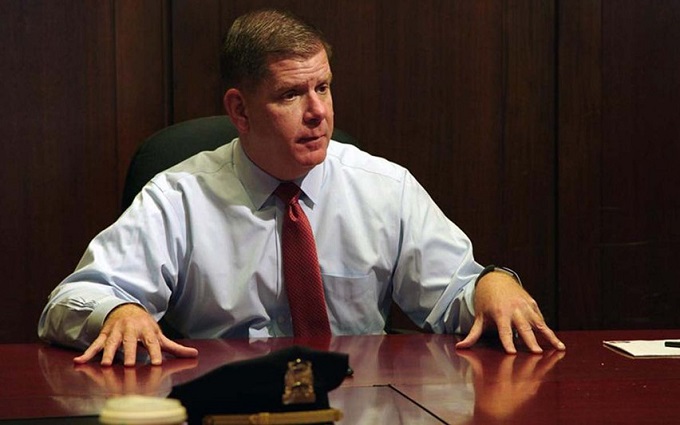
The Plot
A monumentally vast documentary capturing the full tapestry of Boston city services in painstaking detail, giving a uniquely sprawling portrait of the daily y functional reality of the life of a major city.
The Good
Frederick Wiseman is a uniquely passionate and through filmmaker who has dedicated a lifetime to capturing America on screen in over 40 non-fiction films. Returning again to his home state of Massachusetts’s for a third time he embarks on the truly ambitious project of capturing the fill scope of one of the country’s most iconic cities.
Filmed across the course of a year from 2018 to 2019 the film now serves as a time capsule of the last days of a pre-2020 normalcy. The film’s extensively massive archive of daily life in the narrow corridors of local power is a stark insight into the banal realities of local government.
The film’s principal figure Democratic Mayor Marty Walsh is a potentially interesting counterpoint to the much vilified rhetoric of Donald Trump. His frequent reflections on environmentalism, gender equality and diversity reflect upon increasingly divisive issues in American society. These topics rendered all the more urgent but by the rising tensions within a city that has witnessed seismic shifts in demographics and economic fortunes.
For an understated local politician Mayor Walsh is at least a slightly intriguing figure. Having emerged from personal traumas and blue collar roots into a prominent position of local political power. Faced with at times the myriad of complex issues that afflict all major American cites today his occasional contributions are among the film’s most seemingly meaningful.
The Bad
Wiseman’s work may be uniquely detailed and complete as a record of the subject matter he explores but with a run time of over four and a half hours this is a truly daunting commitment form an audience. Perhaps in an era of dedicated binge watching culture that won’t prove as off-putting as it would undoubtedly have been in the past, but many may still balk at the challenge of this vast sprawling piece of documentary cinema.
For many people it will be simply exhausting to be plunged into seemingly endless administrative meetings and policy debates. The constant slog of the mundane minutia of city services can be difficult to wade through. Though endlessly intercut with shots of the cityscape, there’s something a little sterile and static about this barrage of imagery. It’s just soundless flashes of a cityscape devoid of life and meaning. It doesn’t serve as nearly an effective enough break from the films main body of conversation.
The film is so slow moving and packed with rambling ordinary conversations about absurdly local political concerns that it’s difficult to discern any wider meaning from it. In truth the goal of a documentary should be perhaps to capture the spirit of a topic or make some form of constructive commentary on it. The film sometimes feels as if the filmmakers merely left the camera running for a year in local government offices and meeting halls, merely to publish the hastily assembled raw footage.
At a time when the world is more politicized and burdened with headline level problems than ever the prospect of having to endure the reality of being trapped in meetings full of political jargon and the well intentioned ramblings of administrative staff and activists. If the goal of the film is merely to give audiences the actual experience of literally being trapped in that endless cycle of largely pointless discussions and navel gazing administrative bureaucracy, then it has most definitely succeeded.
Unfortunately the film’s unfocused and painfully dull qualities leave it impossible to discern any meaningful purpose to the exercise. Turing a camera on real life without any filter for irrelevance and banality makes you wonder why you even bothered recording in the first place.
Regrettably the vast gulf in quality between this film and the astonishing pieces of documentary cinema showcased elsewhere in the festival is a little embarrassing. It’s a piece of static white noise in contrast to symphonies.
The Ugly Truth
Frederick Wiseman continues his ambitious efforts to document America on screen with another ambitiously long but diligently assembled portrait of a city and those responsible for its most basic functions. Sadly the film’s vast unwieldy run time and slow moving mundane qualities will likely discourage all but the most hardened enthusiasts of local politics. It’s unfortunately very difficult to discern what if any purpose Wiseman has in assembling such a sprawling unnecessary archive of some of the dullest elements of daily life.
Review by Russell Nelson